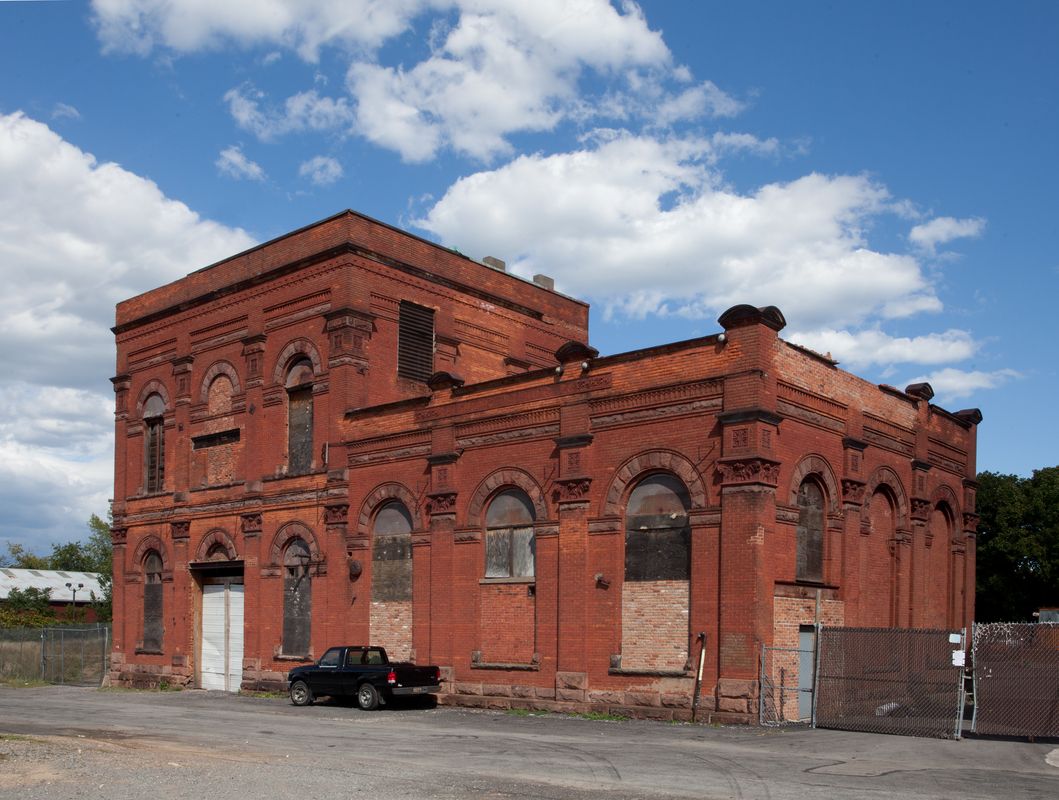2016 Five to Revive
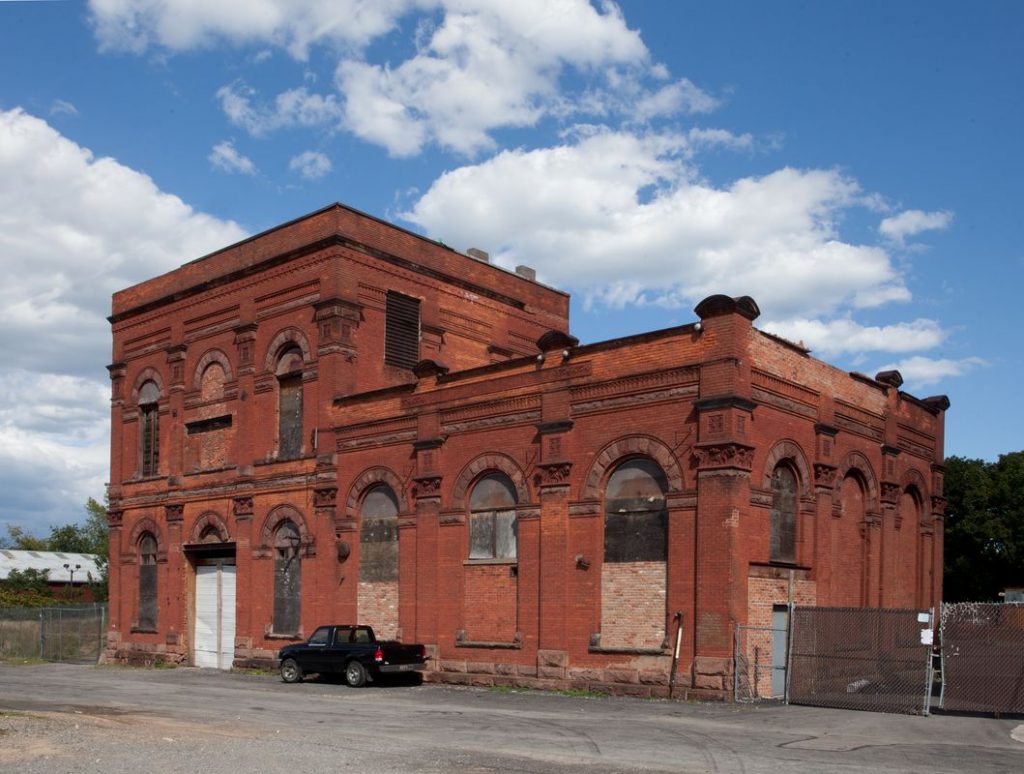
Photo courtesy Richard Margolis
Former Rochester Brewing Company Complex
38-42 Cliff St.
City of Rochester, Monroe County
With a dramatic site overlooking the Genesee River gorge, the former Rochester Brewing Company buildings comprise one of a few surviving 19th century brewery complexes in the city. Located one block east of Lake Avenue, the original brewery complex included nearly a dozen buildings. In 1985, a massive fire destroyed the northern half of this complex. Today, the distinctive Italianate-style office and south brewery buildings survive, offering a major redevelopment opportunity in this unique location.
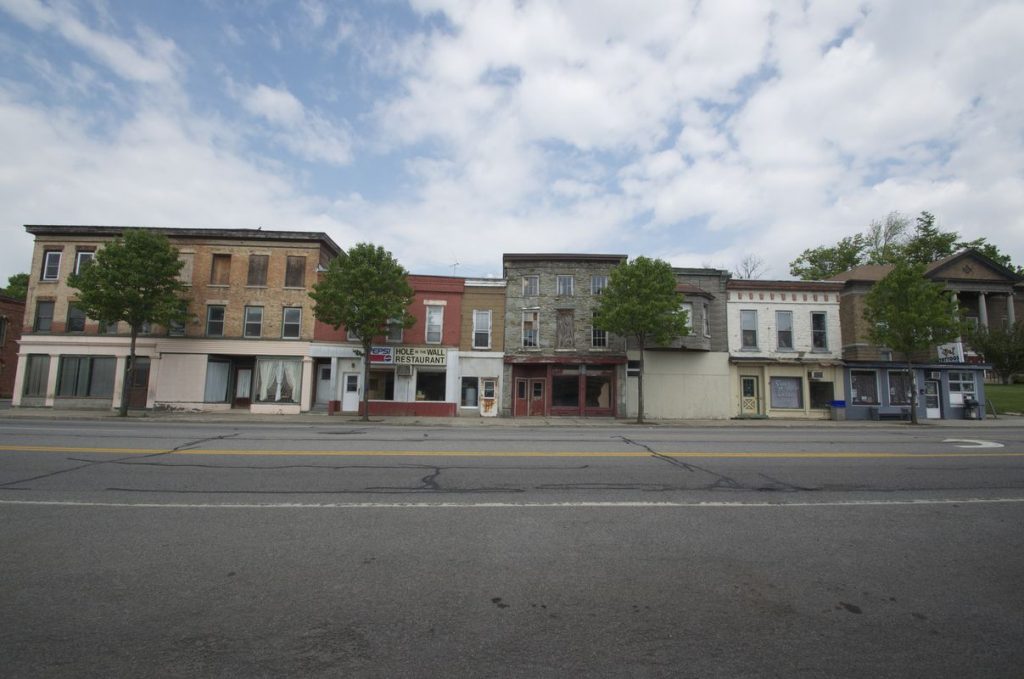
Photo courtesy Ann Burlingham
Downtown Perry Block of Commercial Buildings
Main Street
Village of Perry, Wyoming County
At the northern gateway to the village business district, this distinctive block of historic commercial buildings on Main Street has great potential for redevelopment. It includes some of the oldest commercial buildings in Wyoming County, featuring brick, stone and frame construction. Despite their location, these buildings have been vacant or underutilized for decades. In recent years, Perry has experienced a resurgence, with an engaged citizenry and adaptive use projects that have transformed vacant buildings into economic assets. Today, renewed interest in these underutilized Main Street buildings signals an opportunity to rehabilitate one of the village’s most important commercial blocks.
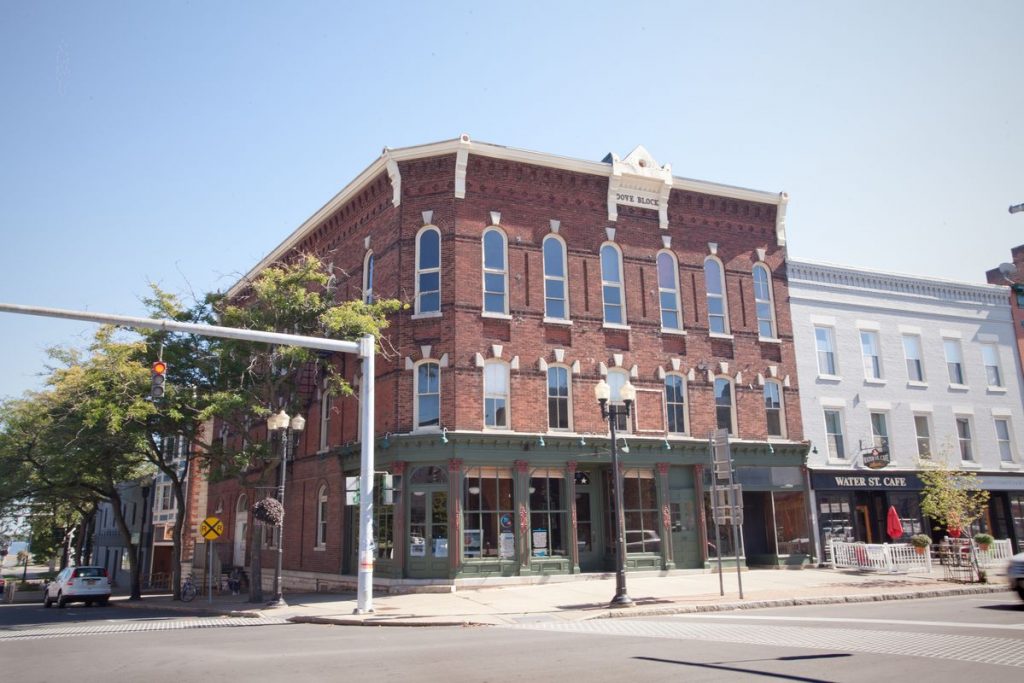
Dove Block
459 Exchange Street
City of Geneva, Ontario County
Located in the heart of Geneva’s downtown, the Dove Block is one of that community’s most distinctive commercial buildings. Built in 1878, the three-story structure was erected by W.G. Dove, a successful contractor and brick manufacturer. The building originally housed an auditorium, roller-skating rink, and drill hall, with retail businesses on the first floor. In the 1930s, W.G. Dove’s son, Arthur—considered America’s first abstract expressionist artist—resided on the third floor, where he painted some of his most famous works. A group of Geneva citizens has formed “The Dove Block Restoration Group” with plans to purchase and rehabilitate the building, which has been vacant for more than a dozen years.
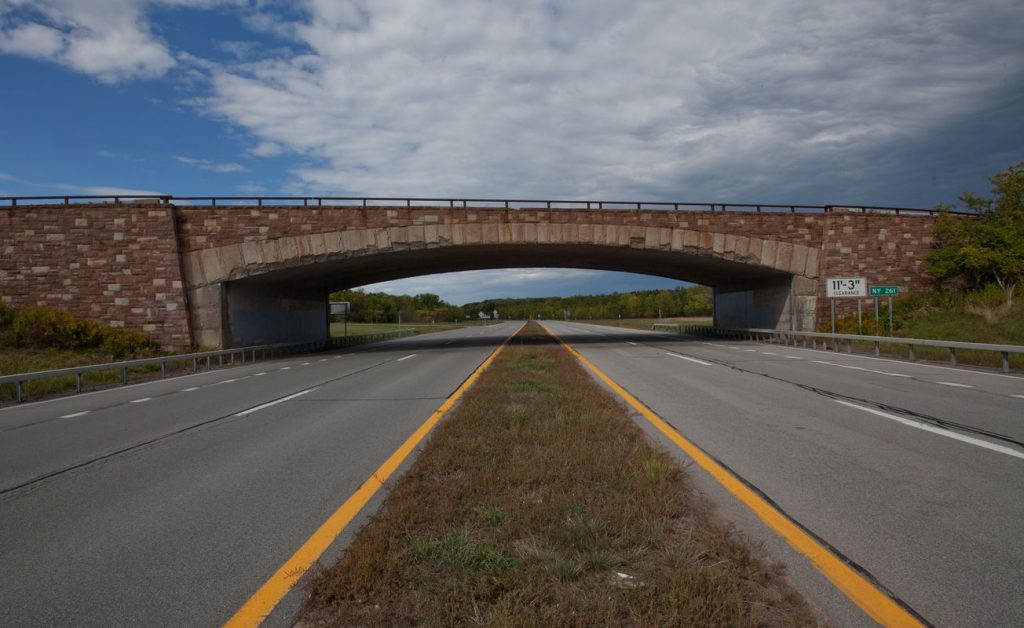
Photo courtesy Richard Margolis
Lake Ontario State Parkway
Monroe and Orleans Counties
Officially eligible for listing in the National Register of Historic Places, this 35-mile parkway along the southern shore of Lake Ontario is one of only two state parkways built in western New York. Constructed beginning in the late 1940s, it is a segment of a much longer parkway originally planned by Franklin D. Roosevelt to connect Fort Niagara to the Thousand Islands. The Lake Ontario State Parkway is architecturally significant as a designed historic landscape in the tradition of earlier parkways in New York State, featuring a picturesque curving route, rustic sandstone bridges and buildings, and park-like landscaping, offering scenic views of Lake Ontario and the surrounding countryside. Changing demographics, economic forces, and a scarcity of resources have contributed to the Parkway’s current condition, with some sections needing significant investment. A part of the Great Lakes Seaway Trail National Scenic Byway, the Parkway could present an opportunity for reuse as a multi-purpose recreational corridor, with road maintenance costs decreased as the Parkway’s use and appeal is diversified to better serve varied groups of users.

The Traditional Trades
Throughout western New York
To rehabilitate a historic building correctly, you need a professional trained in the appropriate skills, such as carpentry, masonry, stained/decorative glass, painting, roof repair, metalwork, and window restoration. While there are veteran practitioners of the traditional trades in our region, many of them are approaching retirement. Without a new generation of craftspeople to take over, we are approaching a crisis level of diminishing resources and knowledge to care for our historic resources. Rehabilitation of historic buildings has increased exponentially during the past several decades, providing employment opportunities for craftspeople who are trained in these specific skills. Other communities have developed trade schools and preservation skills programs to begin addressing the problem. This impending crisis represents an opportunity to provide marketable skills and employment to young men and women here in western New York as well.

